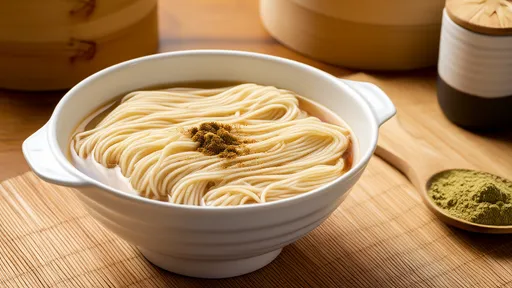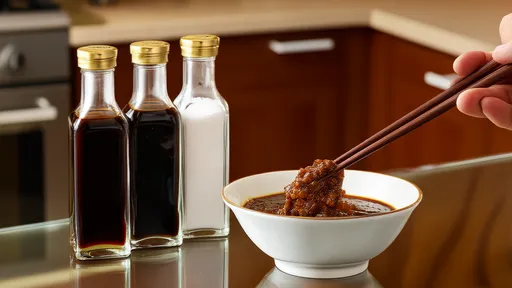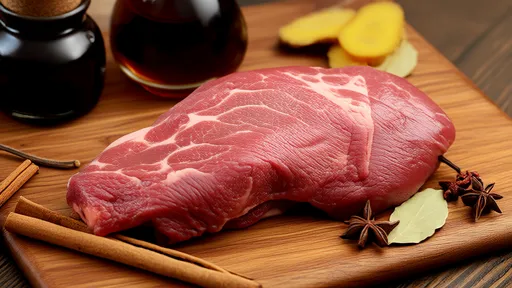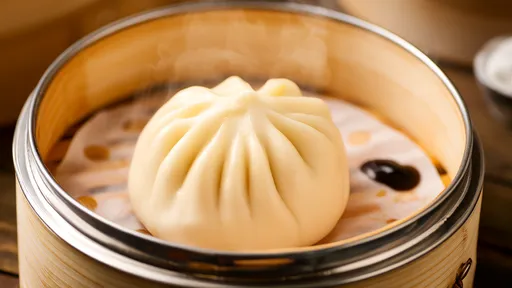In recent years, the global health community has raised concerns about excessive sodium intake linked to processed foods and restaurant meals. As consumers become more health-conscious, food scientists and chefs alike are exploring ways to reduce salt without sacrificing flavor. One promising alternative gaining traction is kombu powder, derived from dried kelp, which offers umami richness while containing significantly less sodium than monosodium glutamate (MSG).
The quest for salt reduction stems from overwhelming medical evidence tying high sodium diets to hypertension, stroke, and cardiovascular diseases. Traditional approaches often leave food tasting bland, disappointing consumers who expect bold flavors. This has led researchers to investigate how kombu2019s natural glutamates could provide similar flavor enhancement as MSG, but with additional minerals and only a fraction of the sodium content.
Japanese cuisine has used kombu for centuries as a foundational ingredient in dashi broth, valued for its ability to impart deep savory notes. When the seaweed is dried and ground into powder, these flavor compounds become concentrated. Food chemists note that kombu contains glutamic acid, the same amino acid that makes MSG effective, alongside nucleotides that create synergistic umami effects. Unlike processed MSG, kombu powder brings trace minerals like iodine, potassium, and magnesium to the table.
Experimental kitchens have tested kombu powder in various applications with intriguing results. In blind taste tests, panels frequently describe dishes prepared with kombu powder as having more complex, rounded flavors compared to MSG-laden versions. Soups and sauces made with the seaweed powder often receive praise for their oceanic depth and lingering savory finish that table salt alone cannot provide. Some chefs report successfully reducing sodium content by 30-40% in certain recipes without negative feedback from diners.
The production process significantly impacts kombu powder's performance. Artisanal producers typically sun-dry the seaweed before stone-grinding, which preserves more delicate flavor compounds than industrial dehydration methods. Regional variations also exist - kombu harvested from cold Hokkaido waters develops different flavor profiles than varieties from warmer Korean coasts. These terroir differences allow chefs to select powders that complement specific cuisines.
Nutritional analyses reveal kombu powder's advantages extend beyond sodium reduction. The seaweed contains alginates that may help regulate cholesterol absorption and antioxidants like fucoxanthin. Its natural iodine content supports thyroid function, though manufacturers caution that excessive consumption could lead to mineral imbalances. Unlike MSG, which some consumers report causing adverse reactions, kombu2019s glutamates appear bound within a food matrix that may reduce sensitivity issues.
Commercial kitchens face practical considerations when adopting kombu powder. The ingredient behaves differently than pure MSG, requiring adjustments to cooking techniques. Its flavors develop more gradually during cooking and can become bitter if overheated. Some chefs recommend hydrating the powder in cool liquids before incorporation or adding it late in the cooking process. Storage also matters - kombu powder's delicate compounds degrade faster than shelf-stable MSG, requiring airtight containers away from light and heat.
Consumer education presents another challenge. While food enthusiasts readily embrace kombu powder, mainstream shoppers may need guidance about this unfamiliar ingredient. Marketing campaigns highlighting its ancient culinary heritage and natural origins appear more effective than technical explanations about umami chemistry. Some producers successfully position kombu powder as a premium alternative, emphasizing its artisanal production and complex flavor profile rather than framing it solely as a salt substitute.
Economic factors influence widespread adoption. High-quality kombu powder currently costs significantly more than industrial MSG, though prices are dropping as production scales up. Some restaurants find that combining reduced amounts of kombu powder with small quantities of salt provides optimal flavor at reasonable cost. Food manufacturers are experimenting with similar hybrid approaches for processed foods, aiming to meet sodium reduction targets without alienating cost-sensitive consumers.
Regulatory agencies have begun recognizing kombu powder's potential. Several countries now permit kombu-derived glutamates to be listed as "natural flavorings" rather than additives, appealing to clean-label trends. However, standards vary globally regarding iodine content claims and allowable harvesting waters, creating compliance challenges for international food brands.
Looking ahead, researchers are investigating whether other seaweeds or mushroom powders could complement or enhance kombu's effects. Early studies suggest combining different umami sources may allow even greater sodium reduction while maintaining flavor complexity. As culinary innovation meets nutritional science, kombu powder represents more than just an alternative seasoning - it exemplifies how traditional ingredients can address modern health challenges without compromising one of life's simplest pleasures: delicious food.

By /Jul 24, 2025

By /Jul 24, 2025

By /Jul 24, 2025

By /Jul 24, 2025

By /Jul 24, 2025

By /Jul 24, 2025

By /Jul 24, 2025

By /Jul 24, 2025

By /Jul 24, 2025

By /Jul 24, 2025

By /Jul 24, 2025

By /Jul 24, 2025

By /Jul 24, 2025

By /Jul 24, 2025

By /Jul 24, 2025

By /Jul 24, 2025

By /Jul 24, 2025

By /Jul 24, 2025